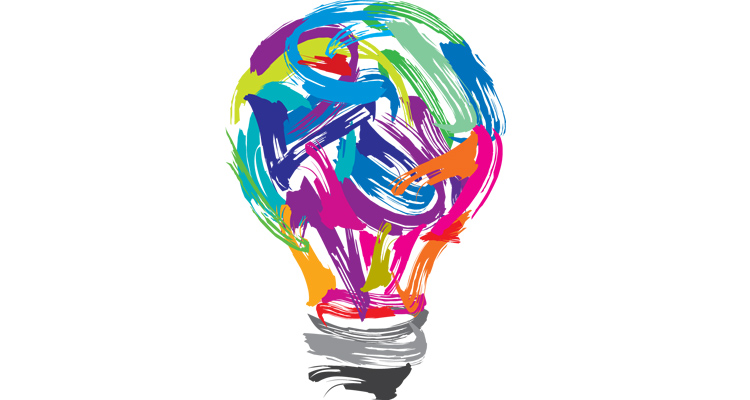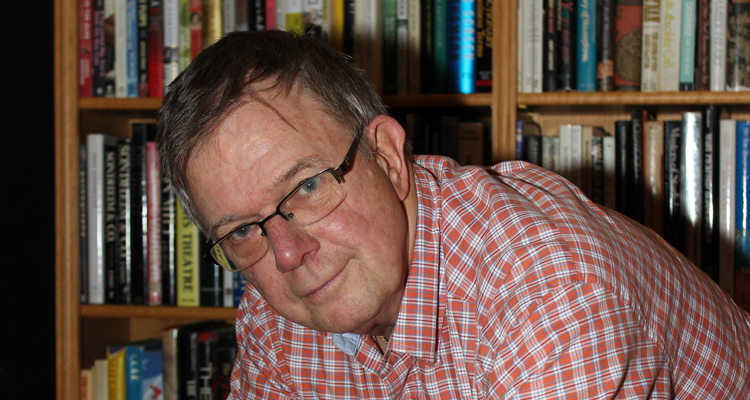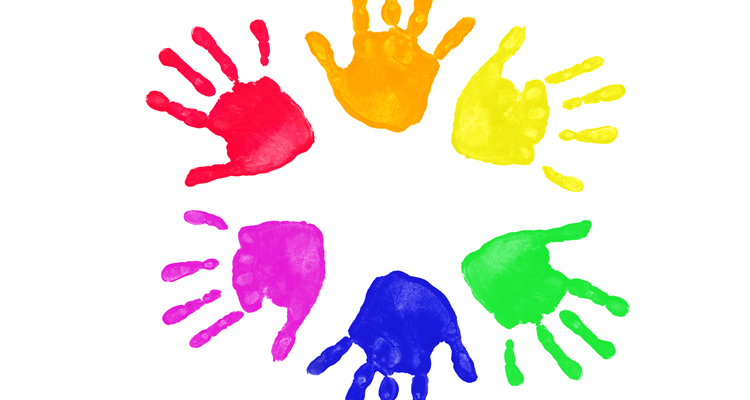When an artist creates something, it’s therapeutic. Tying together two scenes separated by a widening plot hole brings not only a smile to a screenwriter’s face, but also relief. The screenplay marches onward. Each day everyone writes their own screenplay. It’s called life. For some, their muse isn’t so clear, paving plot holes doesn’t come easy. Frustration settles in and they shut down. Expressive therapy becomes a viable outlet.
Expressive therapy involves the use of creative arts such as storytelling, dance, poetry, and visual arts to aid in therapeutic healing and human growth. Artists, musicians, and writers have used this form of therapy since the dawn of time. Most have heard the saying, “An artist is a tortured soul.” It’s usually through their work that they find peace. Expressive therapists believe that through creativity and imagination, people can unlock the doors that keep them from exploring their feelings, emotions, and thought processes.
One does not have to be a great artist to benefit from expressive therapy. It’s not about the final product. It’s about the process.
The Canvas Speaks a Thousand Words
One form of expressive therapy is art. According to Lance Oldham, MS, NCC, LPB, of Tree of Life in Greensboro, North Carolina, “Art therapy is the use of drawing, painting, collaging, mask making, or other visual arts with clients within a therapy session. Although, some clients may do the art outside of the session and bring it in for discussion. Art therapy is a great complimentary method to talk therapy and has many uses and benefits.
The term “art therapy” first emerged in the late 1940s. British artist, Adrian Hill discovered the therapeutic benefits of art while recovering from tuberculosis. Hill rationalized that art “completely engrosses the mind (as well as the fingers).” This in turn allows the creative energy of the inhibited patient to flow. Hill suggested that the creation of art enables a patient to “build up a strong defense against his misfortunes.”
Oldham says, “The use of art in therapy helps clients, who otherwise struggle or have a difficulty doing so through verbal communication, expressing thoughts, feelings, and emotions. For some clients, art can be a release, a method of getting distressing feelings and thoughts out of the mind and body and onto paper, canvas, or even the wall.”
Healing is the main goal of art therapy. Studies have shown the use of art therapy to be successful when applied to Alzheimer’s patients dealing with memory loss. Art therapy has also been influential in helping people suffering from traumatic brain injuries, post-traumatic stress disorder chronic illnesses and depression.
Art as a Coping Mechanism
• After a Cancer Diagnosis: Art therapy has been known to improve motivation, general well-being, and quality of life in cancer patients.
• After a Disaster: Art therapy has been proven effective in disaster relief. Art therapists encourage victims of natural and man-made disasters to express their feelings of the experience through art.
• After the Death of a Loved One: Art therapy encourages the conscious and unconscious expression of the mourning process in both children and adults.
Oldham says, “The use of art in therapy is actually meant to be a casual and relaxing process. And many clients experience a feeling of calm after making art, even before the art that is made is discussed. What the client experiences while creating the art can be the most cathartic.”
The Mighty Pen
Anyone that has kept a personal journal or diary has practiced self-expression through writing. In the 1960s, Dr. Ira Progoff, a psychologist in New York City, shed light on the therapeutic benefits of journaling keeping. Through Progoff’s Intensive Journal Method, writers keep a journal in a three-ring notebook with color-coded sections to catalog their life and healing. Through journal writing, the author is given a unique opportunity to read his own mind.
Psychologist James W. Pennebaker, a pioneer in writing therapy, developed the Pennebaker paradigm which involves writing about emotional or traumatic experiences in three to five, fifteen to twenty minute, sessions over consecutive days. While the writing sessions can be upsetting, they are generally found to be cathartic.
In his original experiment, Pennebaker separated two groups of students. One group was to write about traumatic experiences that had occurred during their lives and the other was to write about trivial events. The results showed that undisclosed trauma in the average American student was shockingly high. But even more telling, the group that wrote about their traumatic experiences showed a marked strengthening of their immune system and a considerable improvement in psychological well-being.
Therapeutic Benefits of Journal Writing
• Break Down Your Thoughts and Feelings
• Lowers Stress
• Better Problem-solving Efficiency
• Helps in Resolving Conflict with Others
With the Internet, writing therapy has evolved. The most popular method is via email between therapist and client. The condition of anonymity provided by email allows the client to disclose certain things easier than in a face-to-face situation. Blogs are another option to express your feelings through words. If you’re not sure you want the world to read your mind, privacy is an option. Blogger allows the blog’s owner to set the privacy level so that only the author can read the posts. It’s a great way to catalog your feelings.
Healing Rhythm
From the Bible, 1 Samuel 16:23, “And it came to pass, when the evil spirit from God was upon Saul, that David took a harp, and played with his hand: so Saul was refreshed, and was well, and the evil spirit departed from him.”
The healing power of music has been documented for centuries. The Greek father of medicine, Hippocrates used music as therapy for his patients. Aristotle stated music is “a force that purifies emotions.” In Native American culture, music plays a significant role in healing. Medicine men chant and dance as a form of treatment for the ill. Music therapy became popular in the United States after World War I when musicians would travel to hospitals to play for those suffering from war injuries and emotional trauma.
Music is Medicine: A Song for the Mending
• Stroke Therapy: Music is used to affect emotions and social interactions.Heart
• Heart Disease: Some music may reduce heart rate, respiratory rate, and blood pressure in patients with coronary heart disease.
• Schizophrenia: Music improves many symptoms.
• Alzheimer’s and dementia: Music has positive effects on social behavior leading to improvements in interaction and conversation
• Depression: Music can be a significant benefit for individuals with major depressive disorder.
Today, music therapy is used in treating individuals with behavioral-emotional disorders. Neurological Musical Therapy (NMT) studies the effects of music and uses the findings to alter brain function through music that will eventually affect the individual non-musically. NMT helps clients with deficiencies in motor skills by training motor responses to music such as toe and finger tapping. Dr. Michael Thaut, a leading researcher in music therapy, says the premise is “The brain that engages in music is changed by engaging in music.”
Get to Moving
“Life isn’t about waiting for the storm to pass: it’s about learning to dance in the rain.” That was said by author Vivian Greene. For some, dancing in the rain may sound silly, but have you ever danced in the rain? Soon you forget about being wet because you’re too busy being alive.
Dance has been used as a form of healing for thousands of years, but the term “dance therapy” wasn’t established until the 1950s. The basic principle of dance therapy is based upon the idea that “the body and mind are inseparable.” When body and mind interact, the change in movement affects total functionality and the movement reflects personality. Dance therapy provides a form of non-verbal mediation for individuals who have trouble expressing their feelings in a verbal manner. The improvisation of dance allows experimentation with new ways of being.
Types of Dance Used for Therapy
• Aerobic Dance
• Ballroom
• Tango
• Turkish Dance
• Waltz
• Foxtrot
While dance therapy is promoted to reduce stress and to help center the body, it also is beneficial in specialized treatments. Dance helps to build better social and motor skills, coordination, improves body images, and personal awareness. These benefits can be felt in a wide array of conditions from autism, to Parkinson’s disease, to eating disorders.
Henry David Thoreau said, “To affect the quality of the day, that is the highest of arts.” The music we listen to, the books we read, and the art we admire enhance the quality of our days. But the power of healing is the greatest gift creative arts give us.












